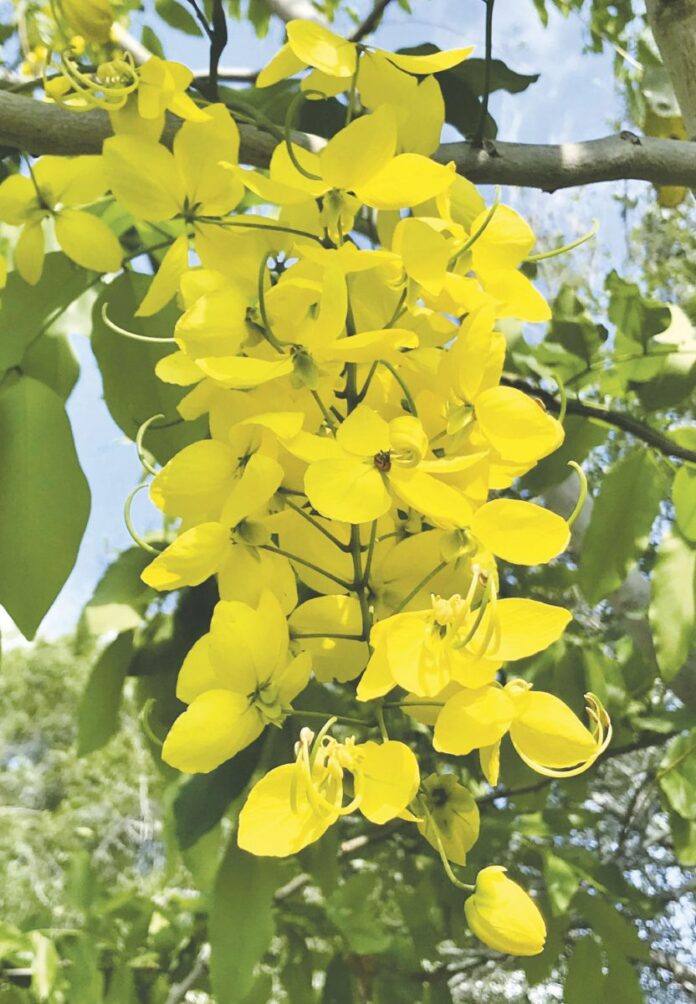BY ANITA WESTERVELT
As June makes way for July, one of the world’s showiest trees speckles the South Texas landscape with bracts of cascading canary-yellow flowers that fairly sizzle from the branches.
When least expecting it while traveling around town running errands, the startling, bright golden yellow blooms of the tropical lluvia de oro tree pop into traffic-stopping view.
Lluvia de oro, also called the golden shower tree, holds the botanical name of Cassia fistula. It is in the Fabaceae (pea) family. This fast-growing tree is native to Egypt, the Mideast and warm areas of Asia from South Pakistan, India to Sri Lanka. It is the national tree of Thailand.
Fortunately for exotic tree lovers, the tree has acclimated itself to our sub-tropical Valley climate. Although some trees suffered somewhat from last winter’s freezing temperatures, the heat and humidity have helped most of the trees return to their thriving existence.
Lluvia de oro is available for purchase locally. If you’re thinking to add one of these spectacular trees to your property, find the best place in your yard to showcase it in all its glory. It can grow to heights of 60 feet with a 20-foot spread. Plant where it will get at least 10 hours of direct sun a day in well-drained, fertile soil.
Although winter is a better time to plant trees in the Valley, if planted now, water it deeply when planting and freely during the hot summer months. You may not see growth progress until next spring as the tree will be contending with the stress of summer while it struggles to build its underground system. When established, lluvia de oro is moderately drought tolerant.
After planting, and annually, the tree will benefit from a 3-inch layer of organic mulch under the tree over the root zone. Mulching helps conserve moisture and adds nutrients to the soil. Depending the age of your tree when planted, it may take three to four years to produce blooms; it’s worth the wait.
The natural growth pattern of these trees is rather untamed. Light pruning the young tree will help control the shape and encourage the crown to develop more uniformly.
For established trees, an annual 10-10-10 fertilizer is recommended. Follow label directions to determine amount of fertilizer to tree size ratio.
Lluvia de Oro trees attract bees and butterflies. Small birds use them for food and shelter. Butterfly enthusiasts will be glad to know that the tree serves as host for cloudless sulfur (Phoebis sennae), orange-barred sulfur (Phoebis philea), and sleepy orange (Eurema nicippe) butterfly larvae.
After flowering, long green legumes, containing several seeds, will grow to about two feet in length and turn black when ripe. Propagation is easily achieved by mature seed.
The foliage is beautiful in its own right. Fairly large wispy, dark green, oval-shaped leaves, about six inches long, are grouped together in six to eight pairs on a long rachis. The long branches tend to droop downward allowing the tree to waft and dance in the south Texas summer breezes.
Anita Westervelt is a Cameron County Master Gardener intern





